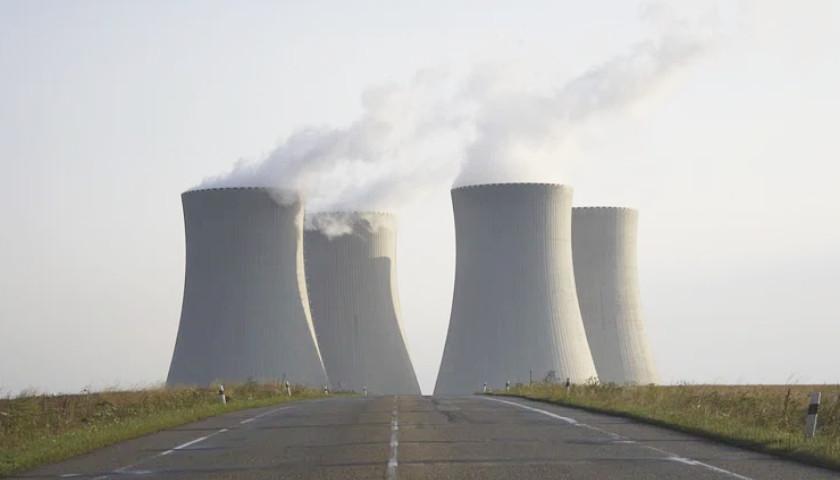by Tom Patterson
Arizona State University President Michael Crow believes we are in such danger that we should amend the U.S. Constitution to empower the government to deal more expansively with climate change. Crow’s view that constitutional protections of our liberties should be eliminated when they become inconvenient wouldn’t square with the founders, but his estimate of the dangers and required remedies for our changing climate are quite mainstream in our society.
“Net zero by 2050” has become an article of faith among our corporate and academic elites, no longer requiring proof or intellectual defense. The notion that we must eliminate or “offset” all carbon emissions by mid-century if we want to save the planet is the organizing principle for ESG investing. ESG is the consideration of environmental issues, social issues, and corporate governance issues when deciding what companies to invest in. In 2022, it was mentioned more than 6000 times in corporate filings with the Securities and Exchange Commission.
The SEC has “helpfully” proposed climate disclosure rules for companies to help investors “evaluate the progress in meeting net-zero emissions and assessing any associated risk.” Skeptics are sidelined as “climate deniers.”
But mounting scientific evidence suggests that net zero is wildly impractical and probably not even achievable. In September, the Electric Power Research Institute, the research arm of the U.S. electric power industry (which would seem to be naturally inclined to support proposals that increase reliance on electricity), released a sober report on the practicality of net zero.
Their study concluded that “clean electricity plus direct electrification and efficiency … are not sufficient by themselves to achieve net-zero economy-wide emissions.” Translation: it can’t be done. No amount of wind turbines, solar panels, battery power, fossil fuel, or other available technologies will achieve net zero by 2050.
Furthermore, even “deep carbonization”—drastic reductions in atmospheric carbon levels—is an impossible dream. With natural gas and nuclear generation forced to the sidelines, that would require options like carbon removal technologies, which would cost a quadrillion (million billion) dollars, which would … well, you get the picture.
Finally, the report concludes living in a net-zero world may not be all that great. Supply chains operating only on electricity and the reliability and resiliency of a net-zero electricity grid could be highly problematic.
The response to this nonpartisan and obviously consequential report was silence. There has been essentially no media coverage. No climate activists rushed to dispute the methodology nor challenge the conclusions.
This is a significant tell. You could assume if the eco-activists were genuinely concerned about our climate future, they would have some interest in responding to this major challenge to their assumptions. But they ignored it to cling to their groupthink.
Yet other indications that the transition to renewable fuels is already off the tracks keep coming. The government-certified North American Electric Reliability Corporation recently issued its 2022 Long-Term Reliability Assessment. It concluded that fossil fuel plants were being removed from the grid too quickly to meet electricity demand, putting us at risk for energy shortages and even blackouts during extreme weather.
But wait, there’s more.
PGM International, a large grid operator in the Northeast, recently released projections indicating it will soon lose 40,000 megawatts, or 21% of its generation capacity. The looming plant closures are mostly “policy-driven” by onerous Environmental Protection Agency regulations and mandatory ESG commitments.
Renewables, although lavishly subsidized by government to replace the lost electricity, consistently underperform and will be able to produce—at most—half of the electricity lost. Meanwhile, the government is perversely mandating electric vehicles, appliances, and whatever that will drain more electricity from the grid precisely when the grid has less to give.
Finally, the repeated assertions of “settled science” when it comes to climate change were unsettled by 1,609 scientists and professors worldwide signing a “No Climate Emergency” declaration. The document was issued by Climate Intelligence or Clintel, a nonpartisan, self-funded, independent organization of scholars whose only agenda is “to generate knowledge and understanding of the causes and effects of climate change and climate policy.”
The scholars point out that there is no basis for claiming an upcoming existential crisis. Carbon dioxide is not primarily a pollutant but a necessary basis for life. Moreover, there is no statistical evidence that global warming is intensifying natural disasters. Panic is dangerous, with the potential to plunge us into perpetual poverty.
They charge that climate science has degenerated into a discussion based on unsubstantiated beliefs, not on “self-critical science.” Historians of the future, reflecting on our era of hyper-politicized science, will undoubtedly agree.
– – –
Tom Patterson is a retired emergency physician, former chairman of the Goldwater Institute, and a former Arizona State Senate majority leader who authored Arizona’s original charter school bill. He is also a donor to The Heritage Foundation.






Now who would have ever thunk that? (Sarcasm!)